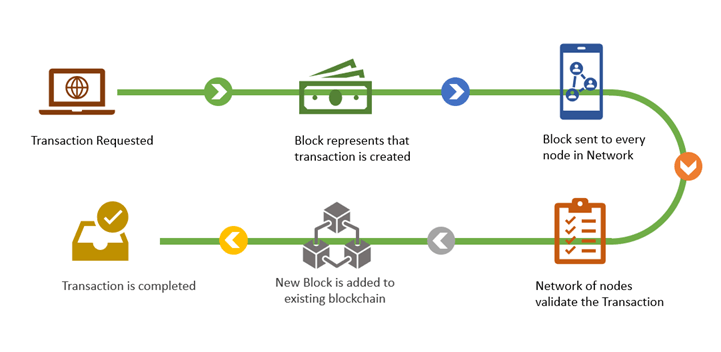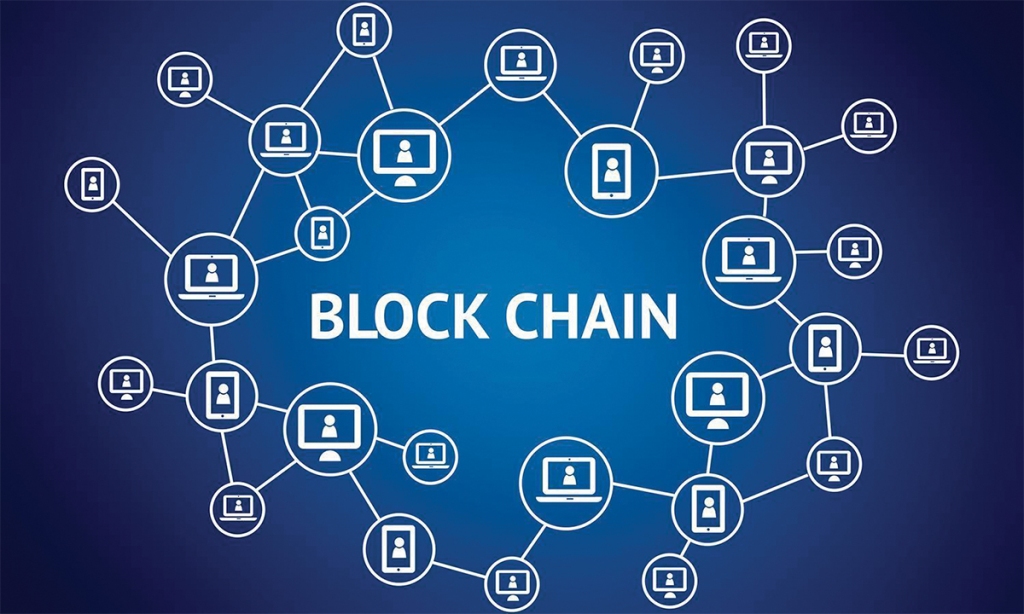Hello all, today I am going to post about a topic that I am a huge enthusiast about: Blockchain !
Nowadays data is one of the most valuable product that you can own, and as we are surrounded by fake data coming from thousands of different places, it is hard to know what is trustworthy or not.
What is Blockchain ?
It is basically the second phase of the internet. The Internet democratized the exchange of information, blockchain promises to democratize the exchange of real value. It was created in 2008 by Satashi Nakamoto, which the identity is still unknown.
An example of how blockchain can be used is when you want to make a transaction of £10 from a X to Y. Nowadays what happens is this transaction goes through a third-party app or payment processing system. Then, X’s bank will need to check the details of Y’s bank and once this is done the transfer of the amount will initiate with a certain amount of deductions, of course. In the end both banks will record the transaction deducting the transaction fee, meaning Y will receive something like £9.95. Even though this process is quite secure and has many redundancies in place to make sure that it stays secure and accurate, there are some basic fundamental issues with this process:
- Delay in processing (using this middle agent and all the bureaucracy)
- Dependency on a single intermediary whose effectiveness is never 100 percent (dependency on a national state)
- In case of any gap in the transaction, no one takes the responsibility and people keep on blaming each other (not concrete proof to check the transaction)
Blockchain is a system where you no longer have to worry about these problems, you just need to perform a transaction and there is a chain of people who are able to validate your transactions every second. This mechanism is called as Proof of block and this is done based on the public key provided for the encrypted data, and it is done by all listeners in the peer-to-peer network. They are real people/identities, not bots. Since there is not a single transaction validating authority (banks, national state) who are centralising the transaction service, the process is effectively decentralized, public and transparent for everybody to see.
Once a specified number of people validates the transaction, the transaction details are stored in the form of a block and that block is added to the existing blockchain. Once the blocks are validated, nobody can change them, just add another one on top, they are immutable. These blocks have a specific hash associated with every block. These hashes are like fingerprints and are unique to every block. Every person that is validating the transaction process is called a miner. The more miners, the better efficiency of the transaction.
A block contains data, a hash, and the hash of the previous block. Since it contains a hash of a previous block, all the blocks contain data for the previous blocks and it becomes almost impossible for a blockchain to be corrupt.

What types of tests can I perform in a Blockchain app ?
- API Testing: In API testing, we ensure that the interaction between applications in the blockchain ecosystem is as expected
- Block/Peer/Node Testing: All the blocks on the Network should be tested individually to ensure proper cooperation. All diverse nodes on the Network must be tested independently to ensure smooth cooperation. Do the nodes in the network sync with other validating peers? Is the integrity of the network and shared ledger maintained throughout the testing?
- Functional Testing: In Functional Testing, we evaluate the work of various functional parts of the Blockchain (e.g., smart contracts).
- Performance Testing: Details like network latency based on block size, network size, expected transaction size, and how long a query takes to return the output with the specialized authentication protocol
- Security Testing: Here, we ensure that the application is not vulnerable to attacks and the systems can protect the data and are capable of handling malicious attacks, etc.
- Integration Testing: In Integration testing, we ensure that all the components of the application are integrated properly and performing the actions appropriately
- Smart Contract Testing: Smart Contract testing is about performing detailed functional testing of business logic and process. It refers to the set of software constructs that automatically execute transactions when predefined conditions and business logic are met. Testing smart contracts involve simulation of all possible expected and unexpected variables for every contract and the triggers that execute transactions.
Benefits of Blockchain Apps
- Decentralized System: No need to have a middle agent for the transactions. Beneficial in various industries like finance, real estate etc.
- Better Security: As it uses multiple nodes to complete and authenticate transactions, you don’t rely only on a transaction system that is controlled by a centralized group of identities.
- Authenticity: Allows the unique algorithm to process data, like a fingerprint.
- Increased Capacity: Increases the capacity of the entire Network as it is completely decentralized and real people can verify the blockchain.
Challenges in Blockchain Testing
- Understanding the Technology: Blockchain is a new technology and understanding it is very important in order to test it. Where does regulatory compliance overlap with quality? How do you fix a defect that has been deployed as part of an immutable smart contract? How do you predict transaction fees and determine the correct behaviour of your application if transaction fees and network volume increase unexpectedly?
- Lack of Blockchain Testing Tools: Blockchain-based applications testing is all about tools. Selecting the right tool as per application is one of the important decisions.
- Defining Test Strategy: Designing Test Strategy for Blockchain application is quite complex exactly because you need to have a good understanding and in-depth knowledge of the technology.
- Block and Chain Size: Testing for block size and chain size is quite important as the application may fail without proper validation of block size and chain size and creating a false-positive verification.
- Integration Testing: Should be done properly and frequently to test that all the components are properly integrated.
- Performance and Load: You need to perform load testing to give better insight into how the Blockchain application performs in the real world, check if it is scalable and what are the limits. Check the example that was done to Ethereum and the Cryptokitties.
- Security: Securing the data should be the most important thing in a Blockchain Application, to be honest, in any application. Even bitcoin is not bug free !
What do you need to consider when testing a Blockchain Application?
Here it goes an example with Bitcoin transaction tests:
- Block Size: The maximum fixed limit of a block is 1 megabyte. After the introduction of Bitcoin, the average size of a block for the first 18 months came out to be under 30 KB. But in December 2017, it hovered around 1 MB. What if the size of a block exceeds beyond 1 MB?
- Chain Size: There is no limit on the size of the chain. So, it is fun to test it for its function and performance. For example, the Bitcoin chain’s size keeps on increasing day by day.
- Load: With so many people on the blockchain, the load becomes a major parameter to test in a blockchain. Bitcoin currently has a maximum throughput of 3.3 – 7 transactions per second, but what if the transaction/second increases as in the case of Visa(2000), Paypal(193), etc? The load remains a major problem with blockchain because performance drops when the load increases.
- Security: Since there are many miners involved with a transaction, ensuring security is a little complex. Well, there is a multi-layered security system in a blockchain. If one of the layers has been hacked, the instantaneous transactions cannot be stopped. It is, therefore, to be tested that one security layer doesn’t affect the other.
- Transmission of data: Encrypted and decrypted data is transferred from computer to computer, so it is necessary to test if the transmission process is working flawlessly. Is the data being sent received on the other end, or is there a loss in between?
- Addition of block: Every new block is added to the chain once the transaction’s validity is authenticated. So, it must be tested that there should not be any leak in the block addition system and the block must be added after authentication.
- Cryptographical data: Cryptography is the backbone of blockchain technology. Therefore, it is necessary to make sure that the data is properly encrypted and decrypted.
Blockchain Testing Tools
- Ethereum Tester: It is an open-source testing library available as a Github repo. Its setup is pretty easy with a manageable API support for various Testing requirements.
- BitcoinJ: It is a Java-based framework built for Bitcoin-based apps that enables you to interact with the real BTC network and various testing activities. In order to use it, you don’t have to download the standard BTC Core files from Bitcoin.com. You can even approach a user forum in case you need clarification or are facing hiccups in the testing process. It is an open network available for assistance.
- Populus: This framework has the testing functionality of Ethereum embedded in the form of a set of features for test contract deployment. It’s developed around the py.test framework. Hence, it is relatively easy to implement.
- Truffle: It’s a commonly referred name for Ethereum developers, which brings in good testing features, such as automated contract testing. The framework holds capabilities beyond just testing functionality within the Blockchain application.
- Embark: It is a testing framework that focuses on developing decentralized applications (dApps) that run on various systems or nodes. It has integrations with Ethereum blockchain, IPFS, and a decentralized communication platforms such as Whisper and Orbit.
Future of Blockchain
Even though Blockchain is often discussed in financial services and cryptocurrencies, this technology offers a broader range of potential applications. The use case of Blockchain technology is picking up pace in various industries and segments. A World Economic Forum report predicts that by 2025, 10% of Global Gross Domestic Product (GDP) is stored on Blockchains or Blockchain-based technology.
Free courses
- https://academy.b9lab.com/courses/course-v1:B9lab+ETH-QA-101+2019-05/about
- https://www.udemy.com/course/blockchain-cryptocurrency-course-101-for-absolute-beginners/
- https://www.udemy.com/course/intro-to-blockchain/
- https://www.udemy.com/course/introduction-to-cryptocurrencies/
- https://www.udemy.com/course/blockchain-theory-101/
- https://www.udemy.com/course/understanding-blockchain-technology/
Resources:
https://www.etestware.com/why-companies-need-blockchain-testing/
https://www.guru99.com/blockchain-testing.html
https://www.cigniti.com/blog/5-popular-tools-for-testing-blockchain-applications/
https://www.testingxperts.com/services/blockchain-application-testing/gb-en
https://blog.b9lab.com/testing-blockchain-applications-not-just-for-testers-bb5932981df4
https://dzone.com/articles/all-you-need-to-know-about-blockchain-testing
https://blogs.iadb.org/caribbean-dev-trends/en/blockchain-technology-explained-and-what-it-could-mean-for-the-caribbean/
https://www.youtube.com/c/exodusmovement/videos

5 thoughts on “Testing Blockchain Applications”